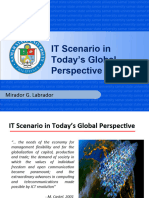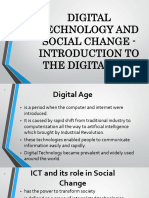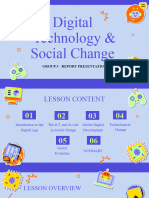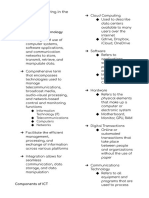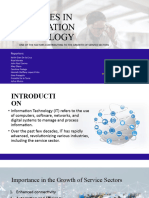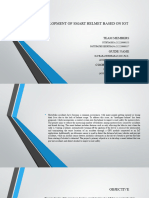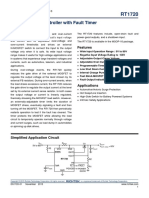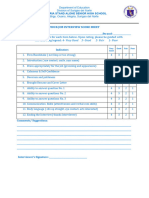0% found this document useful (0 votes)
7 views6 pagesLesson II GEC 9
The document discusses the Internet of Things (IoT) and automation, highlighting their benefits and challenges, such as enhanced convenience and security concerns. It explores the influence of Information Technology (IT) on culture and social behavior, emphasizing digital media, social media impact, and the loss of traditional practices. Additionally, it presents various sociological theories that explain IT's role in shaping society, including technological determinism and surveillance society theory.
Uploaded by
Allyza VallenoCopyright
© © All Rights Reserved
We take content rights seriously. If you suspect this is your content, claim it here.
Available Formats
Download as PDF, TXT or read online on Scribd
0% found this document useful (0 votes)
7 views6 pagesLesson II GEC 9
The document discusses the Internet of Things (IoT) and automation, highlighting their benefits and challenges, such as enhanced convenience and security concerns. It explores the influence of Information Technology (IT) on culture and social behavior, emphasizing digital media, social media impact, and the loss of traditional practices. Additionally, it presents various sociological theories that explain IT's role in shaping society, including technological determinism and surveillance society theory.
Uploaded by
Allyza VallenoCopyright
© © All Rights Reserved
We take content rights seriously. If you suspect this is your content, claim it here.
Available Formats
Download as PDF, TXT or read online on Scribd
/ 6








